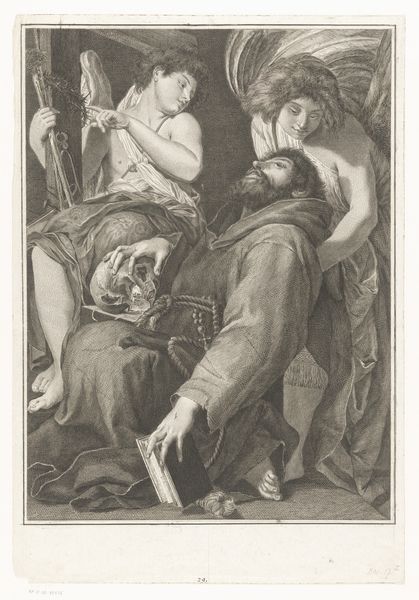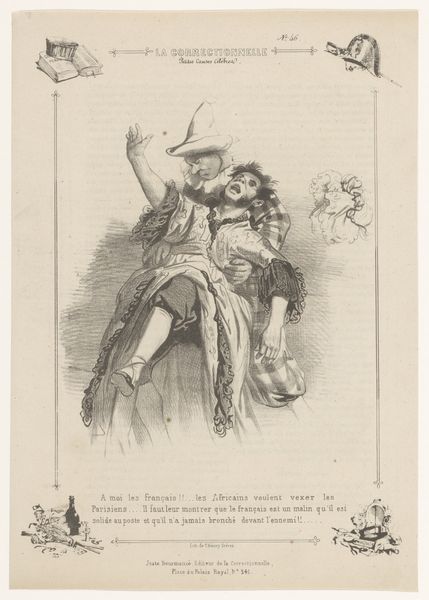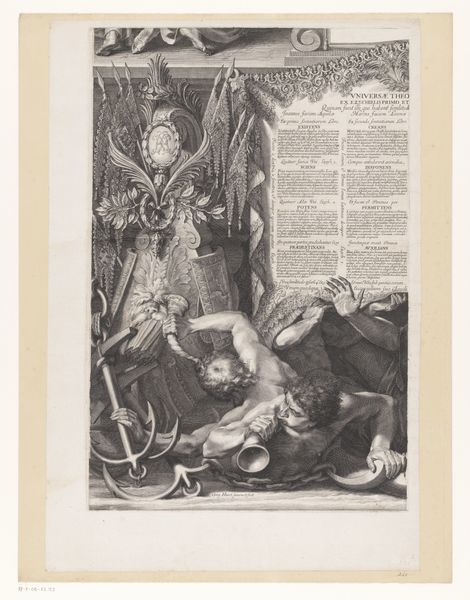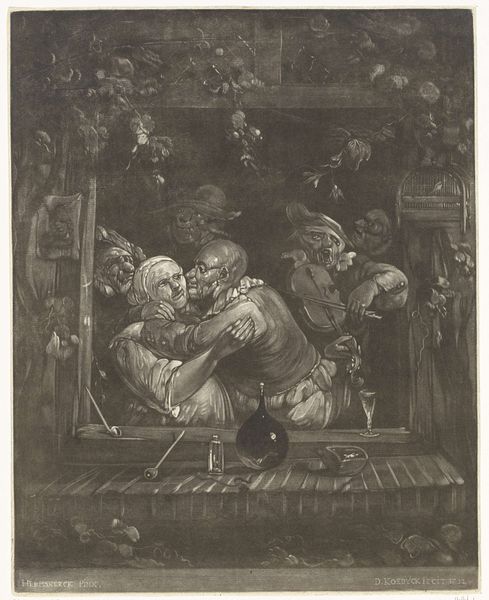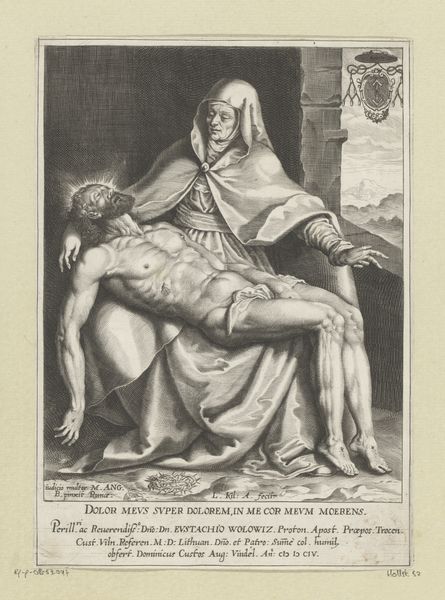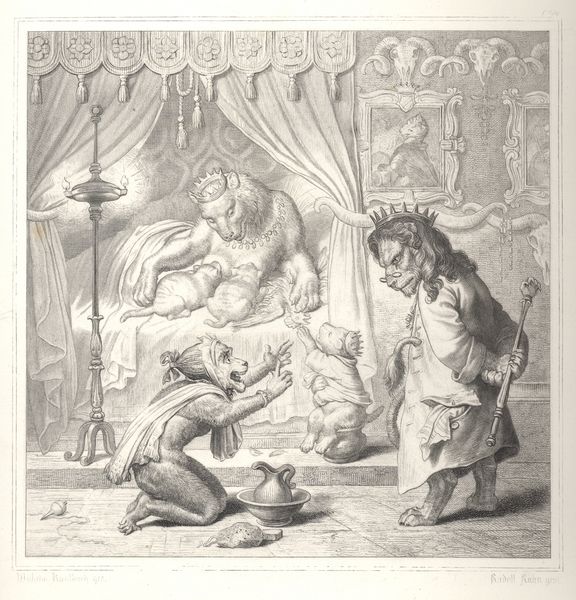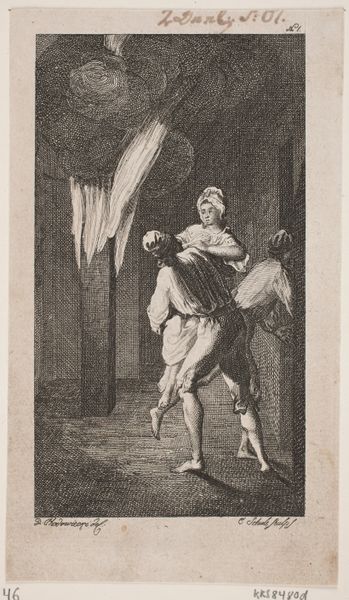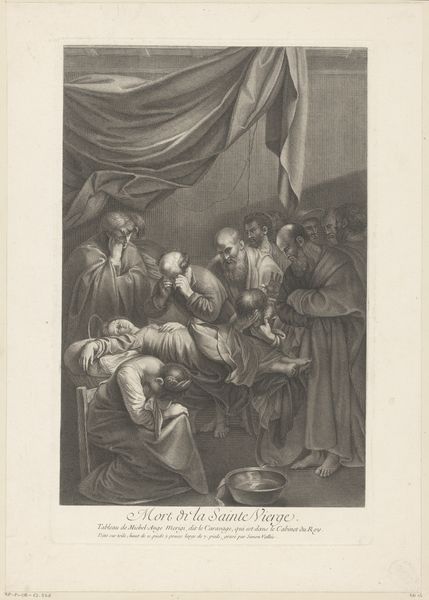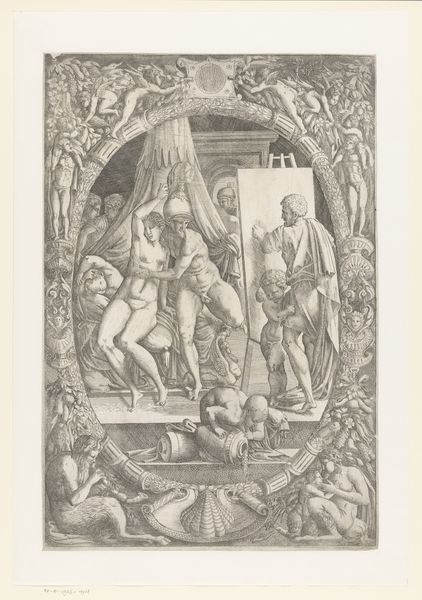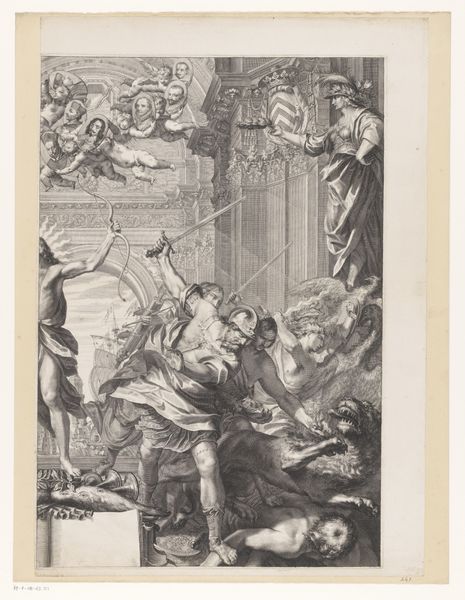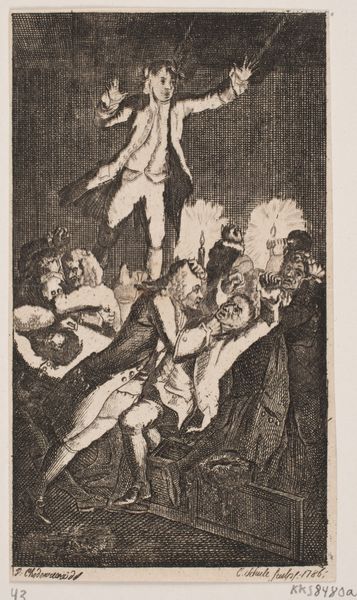
Dimensions: 409 × 266 mm (image); 431 × 290 mm (primary support); 526 × 393 mm (secondary support)
Copyright: Public Domain
Editor: Charles Rambert's "Drunkenness," created in 1851, is a lithograph printed on paper. The drawing portrays what seems to be a personification of addiction, and it definitely gives off ominous vibes. What is your perspective on this somewhat haunting print? Curator: Oh, yes. It has that potent blend of Romanticism and moral allegory that was so popular in France at the time. Rambert plunges us into a shadowy world where the seduction of wine, if you will, is portrayed with a skeletal figure pouring from a seemingly bottomless vessel. He seems to embody the inevitability of decline, doesn't he? What do you make of the blindfolded figure? Editor: It's fascinating how the man seems to struggle against what looks like a skeletal figure, yet he's blindfolded – oblivious to the consequences. What does it tell you about the state of mind? Curator: I’d say that Rambert invites us to ponder about self-awareness versus self-destruction. That intoxicating blindness allows a dark aspect of our nature to take the steering wheel of our destiny. Look how he leads that winged creature onto ruin! How interesting that he used a lithograph medium... any ideas why? Editor: Maybe because printmaking allows to spread a social critique, to be publicly shared widely, don't you think? I will definitely look closer next time! Curator: Yes, definitely! These were potent warnings that permeated society. It seems Rambert struck a chord back then – and, arguably, still does today!
Comments
No comments
Be the first to comment and join the conversation on the ultimate creative platform.
